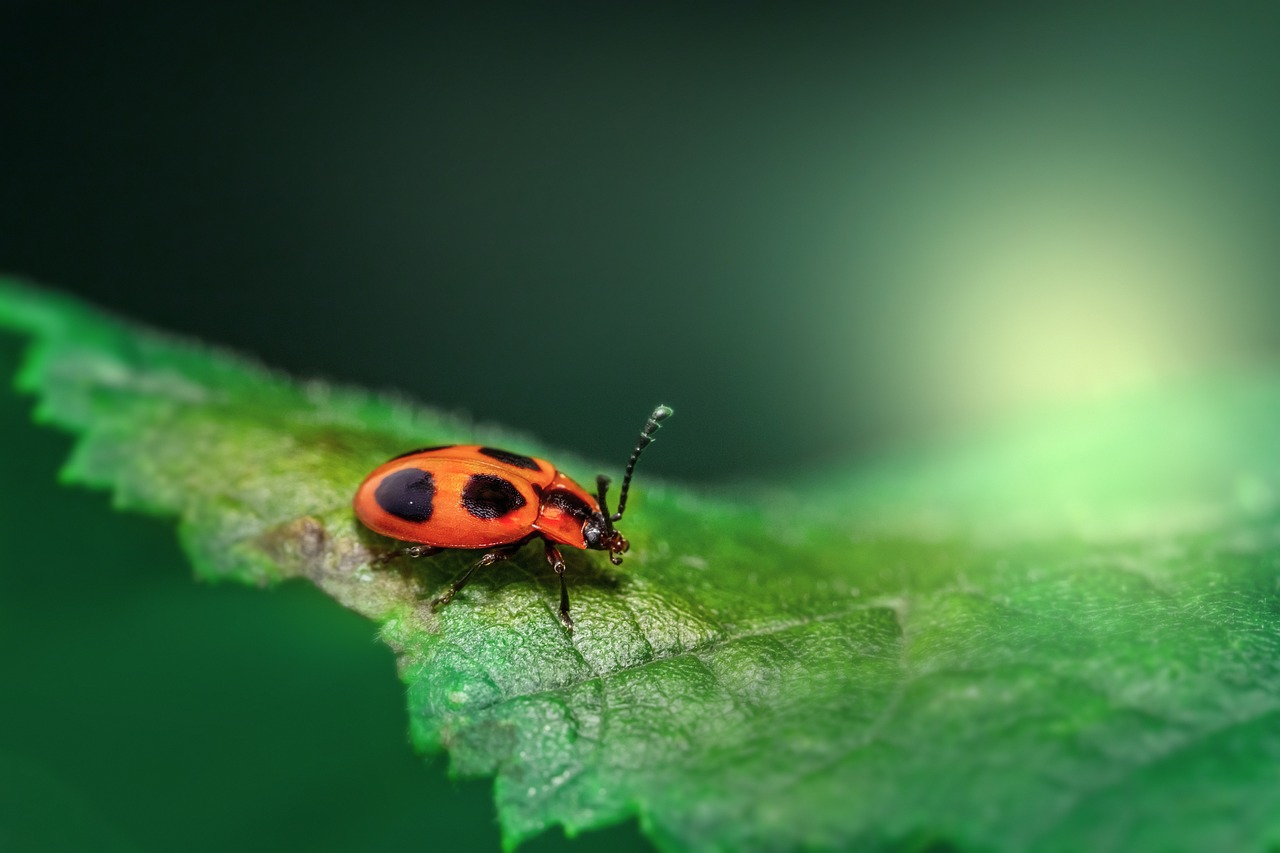Endomychus coccineus, commonly known as the False Ladybird, is a beetle belonging to the family Endomychidae. This beetle is often mistaken for a true ladybird (ladybug) due to its bright coloration, but it has several distinct characteristics.
Appearance
- Size: The false ladybird typically measures about 3.5 to 6 millimeters in length.
- Coloration: It has a bright red or orange body with black spots, resembling a ladybird. The exact number and arrangement of the spots can vary.
- Body Shape: The body is oval and convex, with a smooth, shiny surface. The head and pronotum (the area behind the head) are black, contrasting with the bright elytra (wing covers).
Habitat
- Preferred Habitats: False ladybirds are usually found in deciduous forests, particularly in areas with abundant fungi and decaying wood.
- Geographic Range: They are widely distributed across Europe and parts of Asia.
Behavior
- Diet: Adults and larvae feed primarily on fungi, particularly bracket fungi growing on decaying wood. They may also consume mold and other fungal growths.
- Reproduction: Females lay eggs near fungal food sources. The larvae develop by feeding on fungi until they pupate and emerge as adults.
- Activity: These beetles are typically active from late spring to early autumn.
Interesting Facts
- Mimicry: The bright coloration of the false ladybird is a form of Batesian mimicry, where a harmless species mimics the appearance of a harmful or unpalatable one (in this case, true ladybirds) to deter predators.
- Ecological Role: By feeding on fungi, false ladybirds play an important role in controlling fungal growth and contributing to the decomposition process in forests.
- Varied Diet: While fungi are their primary food source, they are adaptable and can survive on a range of fungal species.
Conservation Status
- Population: Endomychus coccineus is not currently considered threatened and is relatively common within its range.
- Conservation Efforts: Ensuring the health of forest ecosystems, particularly the availability of decaying wood and fungi, helps support populations of these beetles.
Identification Tips
- Coloration: Look for the bright red or orange elytra with black spots, which is the most distinguishing feature of this beetle.
- Size and Shape: Note the small size and convex, oval shape of the body.
- Habitat: Found in deciduous forests, often associated with fungi and decaying wood.
Summary
Endomychus coccineus, the False Ladybird, is a striking beetle that mimics the appearance of true ladybirds. Found in forests across Europe and parts of Asia, it plays an important ecological role by feeding on fungi and aiding in the decomposition process. Its bright coloration and distinctive appearance make it an interesting and notable species in its habitat.
Visited 834 times, 10 visit(s) today
Views: 1464
Subscribe to the newsletter:
